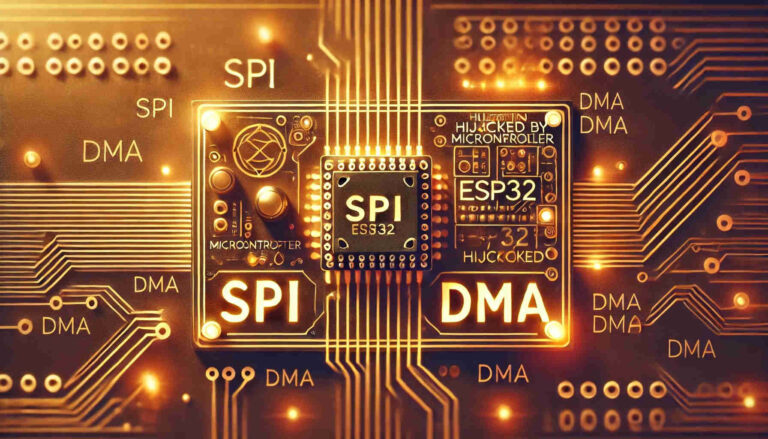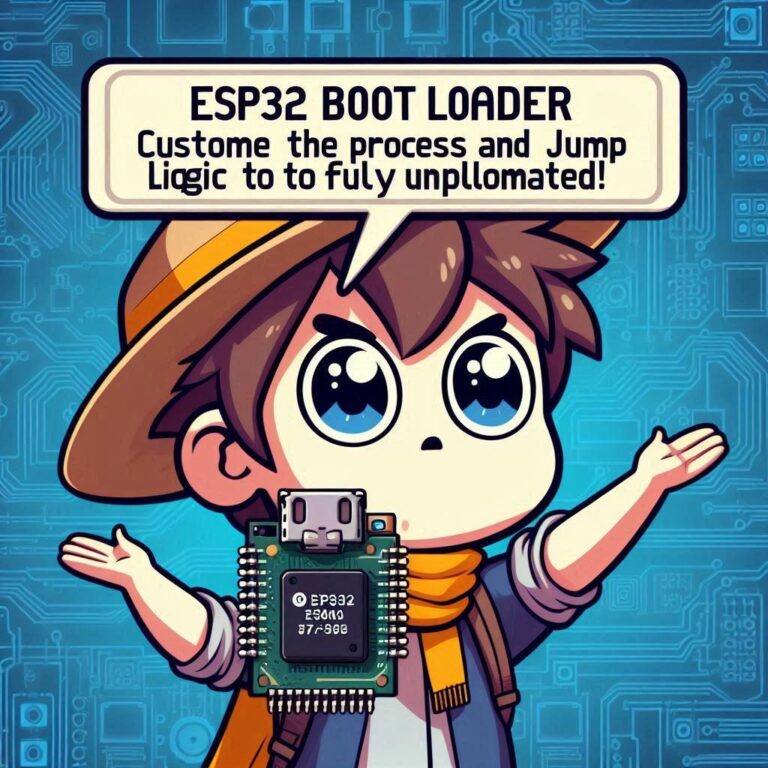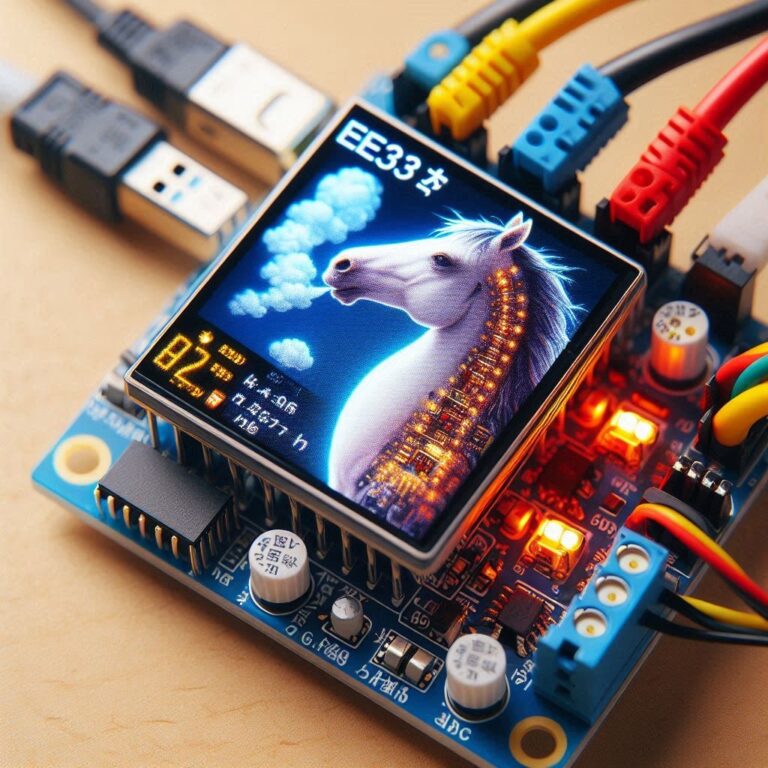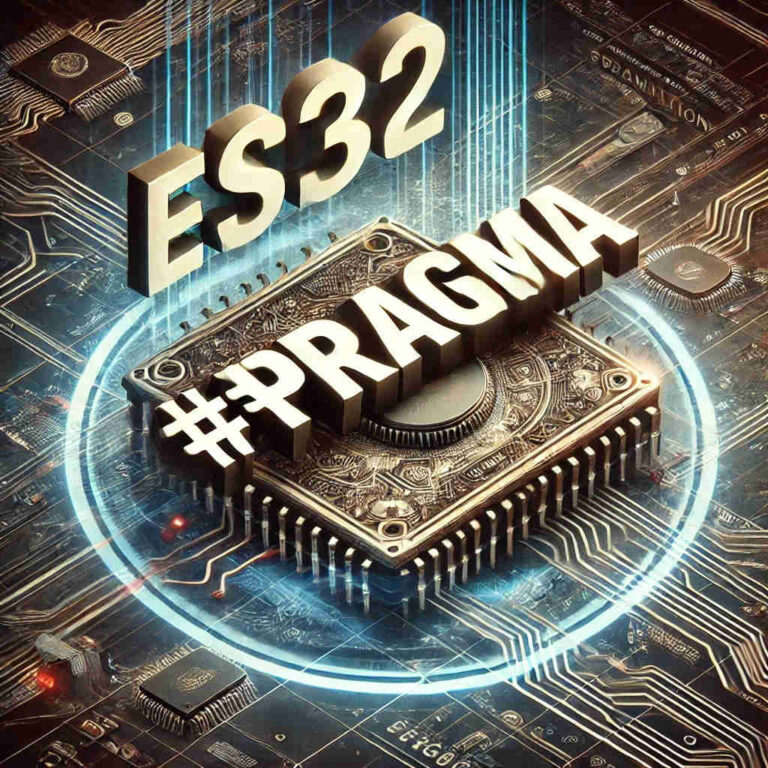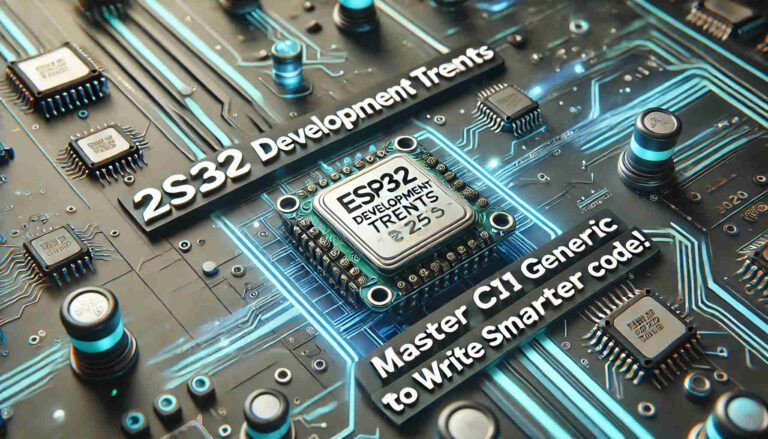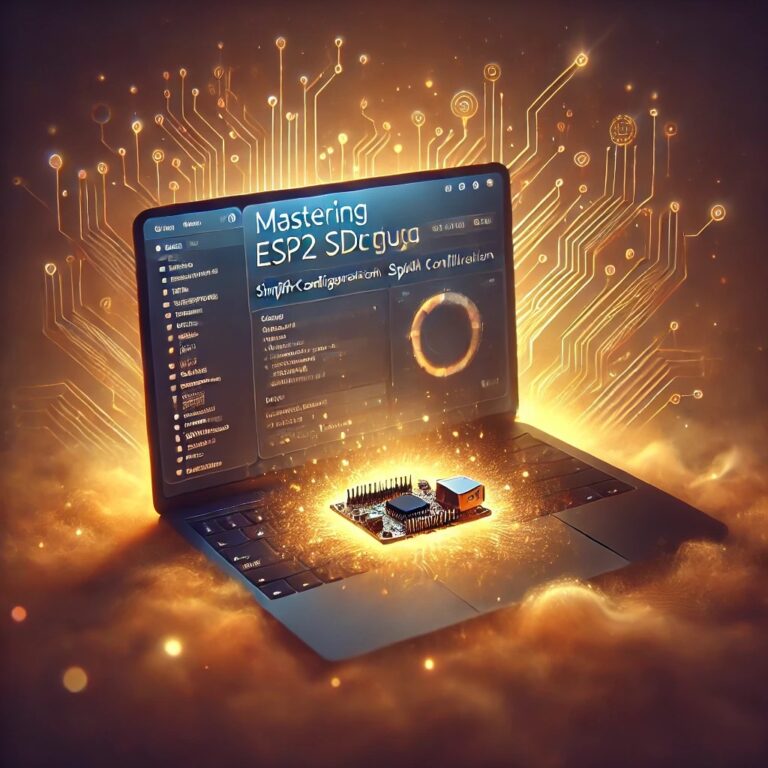Learn C++ Try-Catch with ESP32 | Powerful SPI Scan
This article introduces how to implement SPI device scanning in the ESP32 C++ development environment using the try-catch mechanism. C++ exception handling allows developers to effectively capture and manage errors, making the code more robust. We will walk through the process of setting up the development environment, implementing an SPI scanner, and using the std::exception class to handle and report potential SPI errors.
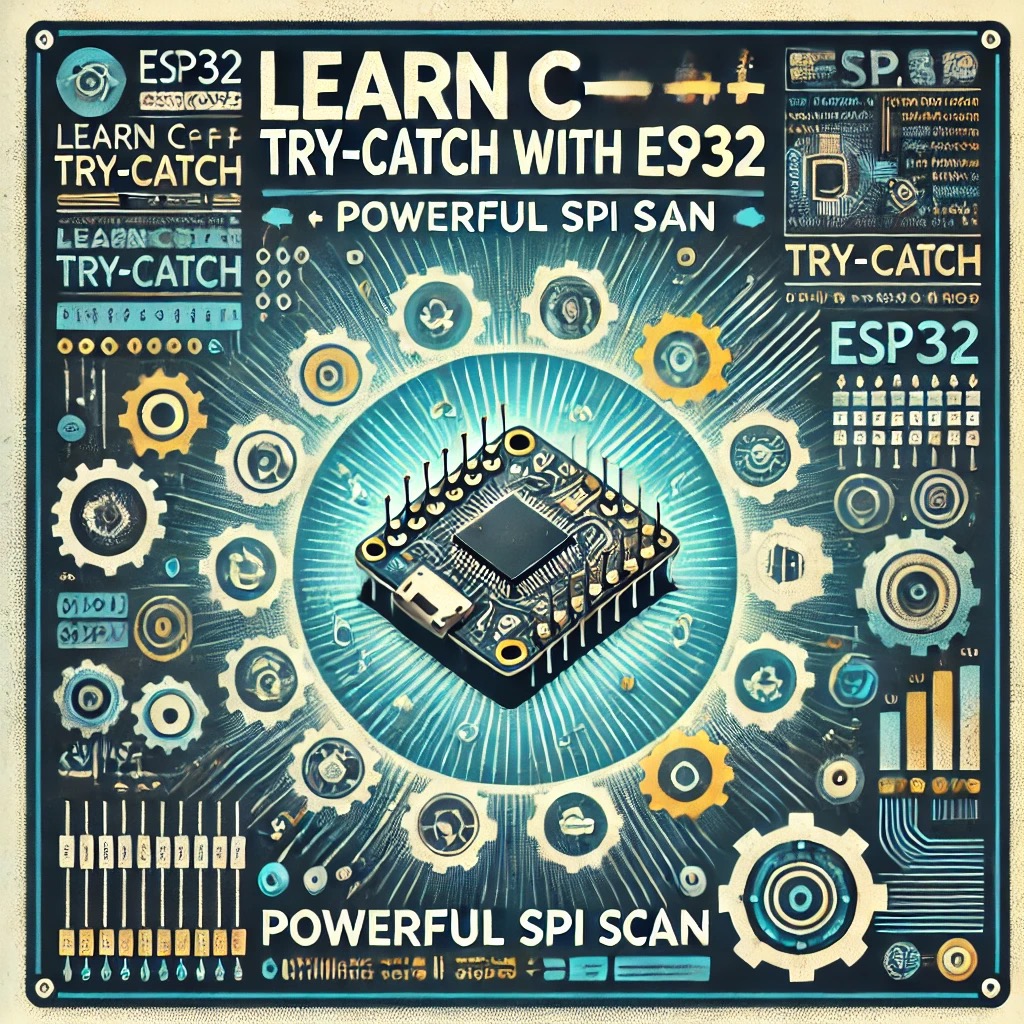
Contents
Introduction
The C++ try-catch mechanism is an exception handling method that allows developers to capture errors occurring during program execution and respond appropriately. This is particularly useful when dealing with unstable hardware. By designing a SPIScanner class, we can ensure the safety of SPI device initialization and communication using try-catch. If communication fails, the exception handling mechanism can prevent the program from crashing and provide error information to developers or users. The SPI scanner will initialize the SPI bus, perform device scanning, and report the results.
Development Environment Setup
1. Install Visual Studio Code from the official website.
2. Install the ESP-IDF plugin.
Setting Up Your Projects
1. In VS Code, press Ctrl (Cmd) + Shift + P, and enter ESP-IDF: New Project.
2. Choose a template project (e.g., blink example), set the project name (e.g., my_project), and choose a storage path.
3. The system will generate a new ESP-IDF project with a basic CMake file and example code.
Project File Structure
my_project/
├── CMakeLists.txt # Build configuration
├── main/
│ ├── CMakeLists.txt # Main component's CMake configuration
│ └── main.cpp # SPI Scanner class and logic
└── sdkconfig # Project configuration
Understanding C++ Try-Catch Mechanism
C++ exception handling provides a way to manage runtime errors. By using try and catch blocks, developers can execute code that may throw errors in the try block and capture and handle those errors in the catch block. This mechanism makes the program more robust and helps prevent crashes due to unhandled errors.
Basic Structure of Try-Catch
In C++, try-catch statements are used to capture and handle exceptions, allowing the program to run stably and handle errors gracefully. Here’s a detailed breakdown of the try-catch statement:
try {
// Code that might throw an exception
} catch (const std::exception& e) {
// Handle the exception
ESP_LOGE("Error", "Caught exception: %s", e.what());
}1. When the code in the try block throws an exception, the program jumps to the corresponding catch block to handle the error.
2. catch (const std::exception& e) indicates that it captures all exceptions of type std::exception and its derived types.
3. e.what() is a member function that returns a short description of the exception, helping developers understand the specific situation of the error.
What is std::exception?
std::exception is the base class for all exceptions in the C++ standard library. It provides basic exception handling capabilities and allows users to define their own exception classes inheriting from std::exception. All custom exception classes can utilize the interfaces provided by std::exception, making exception handling more consistent.
Key Features of std::exception
1. what() Method: std::exception provides a virtual function what(), which returns a C-style string describing the exception. Users can override this method to provide more specific exception information.
2. Type Safety: Using std::exception and its subclasses ensures type-safe exception handling, as the catch statement can capture all types of exceptions.
Custom Exception Class
Here’s an example of a custom exception class that inherits from std::exception:
#include <exception>
#include <string>
class MyException : public std::exception {
private:
std::string msg;
public:
MyException(const std::string& message) : msg(message) {}
const char* what() const noexcept override {
return msg.c_str();
}
};In this example, MyException inherits from std::exception and provides a custom error message.
What is SPI (Serial Peripheral Interface)?
SPI (Serial Peripheral Interface) is a synchronous serial communication protocol widely used for communication between microcontrollers and various external devices (such as sensors, memory, and displays). SPI achieves data transmission through four basic signal lines:
1. MOSI (Master Out Slave In): Data line for the master device output to the peripheral input.
2. MISO (Master In Slave Out): Data line for the master device input from the peripheral output.
3. SCLK (Serial Clock): Clock signal generated by the master device.
4. CS (Chip Select): Used to select specific peripherals.
The main advantages of SPI include high-speed transmission and full-duplex communication capabilities, though it requires more pins and more complex timing control.
Code Implementation
Below is an example code for an ESP32 SPI scanner using the C++ exception handling mechanism. This code utilizes the ESP-IDF library for SPI communication and handles potential errors through a custom exception class.
// main.cpp
#include <stdio.h>
#include <stdint.h>
#include <stddef.h>
#include <string>
#include "freertos/FreeRTOS.h"
#include "freertos/task.h"
#include "driver/spi_master.h"
#include "driver/gpio.h"
#include "esp_log.h" // Include ESP log header
// Define a tag for logging
static const char *TAG = "SPIScanner"; // Tag for log messages
// Custom exception class for handling SPI errors
class SPIException : public std::exception {
private:
std::string msg; // Message describing the exception
public:
// Constructor that initializes the exception message
SPIException(const std::string& message) : msg(message) {}
// Override the what() method to return the exception message
const char* what() const noexcept override {
return msg.c_str();
}
};
// Class responsible for scanning SPI devices
class SPIScanner {
private:
spi_device_handle_t spi; // Handle for the SPI device
// Initialize the SPI bus
void initSPI(int mosi, int miso, int sclk, int cs) {
// Configuration structure for the SPI bus
spi_bus_config_t buscfg = {
.mosi_io_num = mosi, // Master Out Slave In pin
.miso_io_num = miso, // Master In Slave Out pin
.sclk_io_num = sclk, // Serial Clock pin
.quadwp_io_num = -1, // Not used in this configuration
.quadhd_io_num = -1, // Not used in this configuration
.max_transfer_sz = 0, // Maximum transfer size
.flags = SPICOMMON_BUSFLAG_MASTER // Set as master
};
// Configuration structure for the SPI device
spi_device_interface_config_t devcfg = {
.mode = 0, // SPI mode (clock polarity and phase)
.clock_speed_hz = 1000000, // Clock speed in Hz
.spics_io_num = cs, // Chip Select pin
.queue_size = 7, // Transaction queue size
};
// Initialize the SPI bus
esp_err_t ret = spi_bus_initialize(HSPI_HOST, &buscfg, SPI_DMA_CH_AUTO);
if (ret != ESP_OK) {
throw SPIException("Failed to initialize SPI bus"); // Throw an exception if initialization fails
}
// Add the SPI device to the bus
ret = spi_bus_add_device(HSPI_HOST, &devcfg, &spi);
if (ret != ESP_OK) {
throw SPIException("Failed to add device to SPI bus"); // Throw an exception if adding the device fails
}
}
public:
// Constructor for SPIScanner that initializes SPI
SPIScanner(int mosi, int miso, int sclk, int cs) {
try {
initSPI(mosi, miso, sclk, cs); // Call the initialization method
ESP_LOGI(TAG, "SPI Scanner initialized successfully"); // Log successful initialization
} catch (const SPIException& e) {
ESP_LOGE(TAG, "SPI initialization failed: %s", e.what()); // Log initialization failure
throw; // Rethrow the exception
}
}
// Destructor to clean up SPI device
~SPIScanner() {
spi_bus_remove_device(spi); // Remove the device from the bus
spi_bus_free(HSPI_HOST); // Free the SPI bus resources
}
// Method to scan for SPI devices
void scan() {
uint8_t tx_data = 0xFF; // Data to transmit (dummy data)
uint8_t rx_data = 0; // Variable to store received data
// Transaction structure for the SPI communication
spi_transaction_t t = {
.length = 8, // Transaction length in bits
.tx_buffer = &tx_data, // Pointer to the transmit buffer
.rx_buffer = &rx_data // Pointer to the receive buffer
};
ESP_LOGI(TAG, "Starting SPI scan..."); // Log the start of the scan
// Transmit the data and receive the response
esp_err_t ret = spi_device_transmit(spi, &t);
if (ret != ESP_OK) {
throw SPIException("SPI transmission failed"); // Throw an exception if transmission fails
}
ESP_LOGI(TAG, "Received data: 0x%02X", rx_data); // Log the received data
}
};
// ESP-IDF entry point for the application
extern "C" void app_main(void) {
try {
SPIScanner scanner(13, 12, 14, 15); // Create an instance of SPIScanner with specified GPIO pins
while(1) {
try {
scanner.scan(); // Scan for SPI devices
} catch (const SPIException& e) {
ESP_LOGW(TAG, "Scan iteration failed: %s, Continuing...", e.what()); // Log scan failure
}
vTaskDelay(pdMS_TO_TICKS(1000)); // Wait for 1 second before the next scan
}
} catch (const SPIException& e) {
ESP_LOGE(TAG, "Fatal error: %s, System halted.", e.what()); // Log fatal errors
}
}Configuring the ESP32 Development Environment
Before starting to write code, ensure that you have set up the development environment for the ESP32. We will be using VS Code along with the ESP-IDF plugin for development.
Configuring sdkconfig
To enable C++ exception handling in ESP32 development, you need to enable C++ exception handling in the SDK configuration. In VS Code, open the SDK Configuration Editor provided by the ESP-IDF plugin, and find and enable the following option:
Compiler options: Check "Enable C++ exceptions"
This will allow you to use C++ exceptions in your ESP32 projects.
We also need to add compilation options in the CMakeLists.txt file to enable exception handling and set the C++ standard. Here’s how to do it:
# For more information about build system see
# https://docs.espressif.com/projects/esp-idf/en/latest/api-guides/build-system.html# The following five lines of boilerplate have to be in your project's
# CMakeLists in this exact order for cmake to work correctly
cmake_minimum_required(VERSION 3.5)
set(CMAKE_CXX_FLAGS "${CMAKE_CXX_FLAGS} -fexceptions")
set(CMAKE_CXX_STANDARD 11)
set(CMAKE_CXX_STANDARD_REQUIRED ON)
include($ENV{IDF_PATH}/tools/cmake/project.cmake)
....
Compiling and Flashing
In the VSCode window, find the ESP32-IDF : Build, Flash and Monitor icon to compile and flash the program.
Program Output
Once the program runs, you should see the following output in the terminal:
I (123) [SPIScanner]: SPI Scanner initialized successfully
I (223) [SPIScanner]: Starting SPI scan...
I (223) [SPIScanner]: Received data: 0xAA
I (1233) [SPIScanner]: Starting SPI scan...
I (1233) [SPIScanner]: Received data: 0xBB
I (2233) [SPIScanner]: Starting SPI scan...
W (2233) [SPIScanner]: Scan iteration failed: SPI transmission failed, Continuing...
I (3233) [SPIScanner]: Starting SPI scan...
I (3233) [SPIScanner]: Received data: 0xCCConclusion
"Utilizing the try-catch mechanism in C++ is essential for effectively managing errors during SPI communication, enhancing the robustness of your application. This approach allows for improved code readability and ensures that unexpected issues are handled gracefully, preventing application crashes.
In our implementation of the SPIScanner class, the try-catch blocks capture exceptions during device scanning, logging informative error messages while allowing the scan process to continue. This ensures that all potential addresses are checked, maximizing the chances of detecting available devices.
I hope this article helps you understand how to leverage try-catch effectively in your SPI projects. Embrace these techniques to build more resilient applications and enhance your IoT development journey. Happy coding!"


